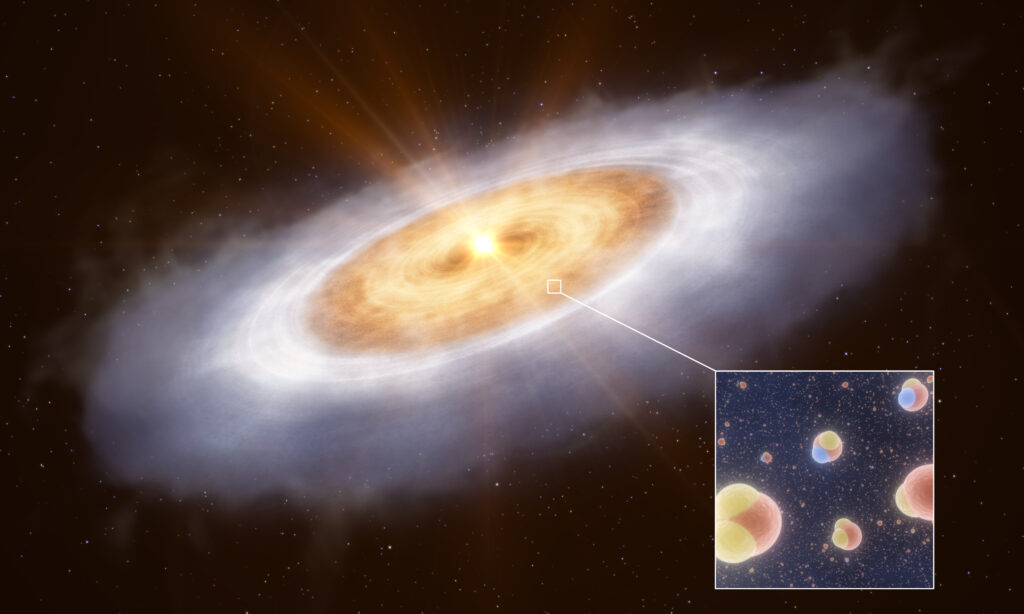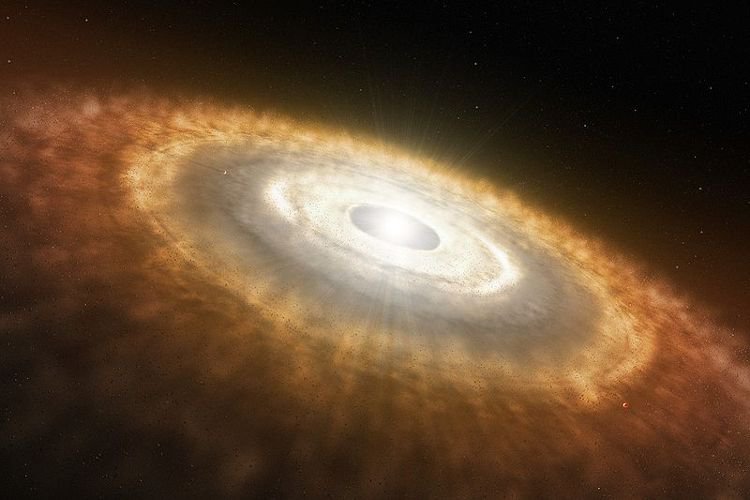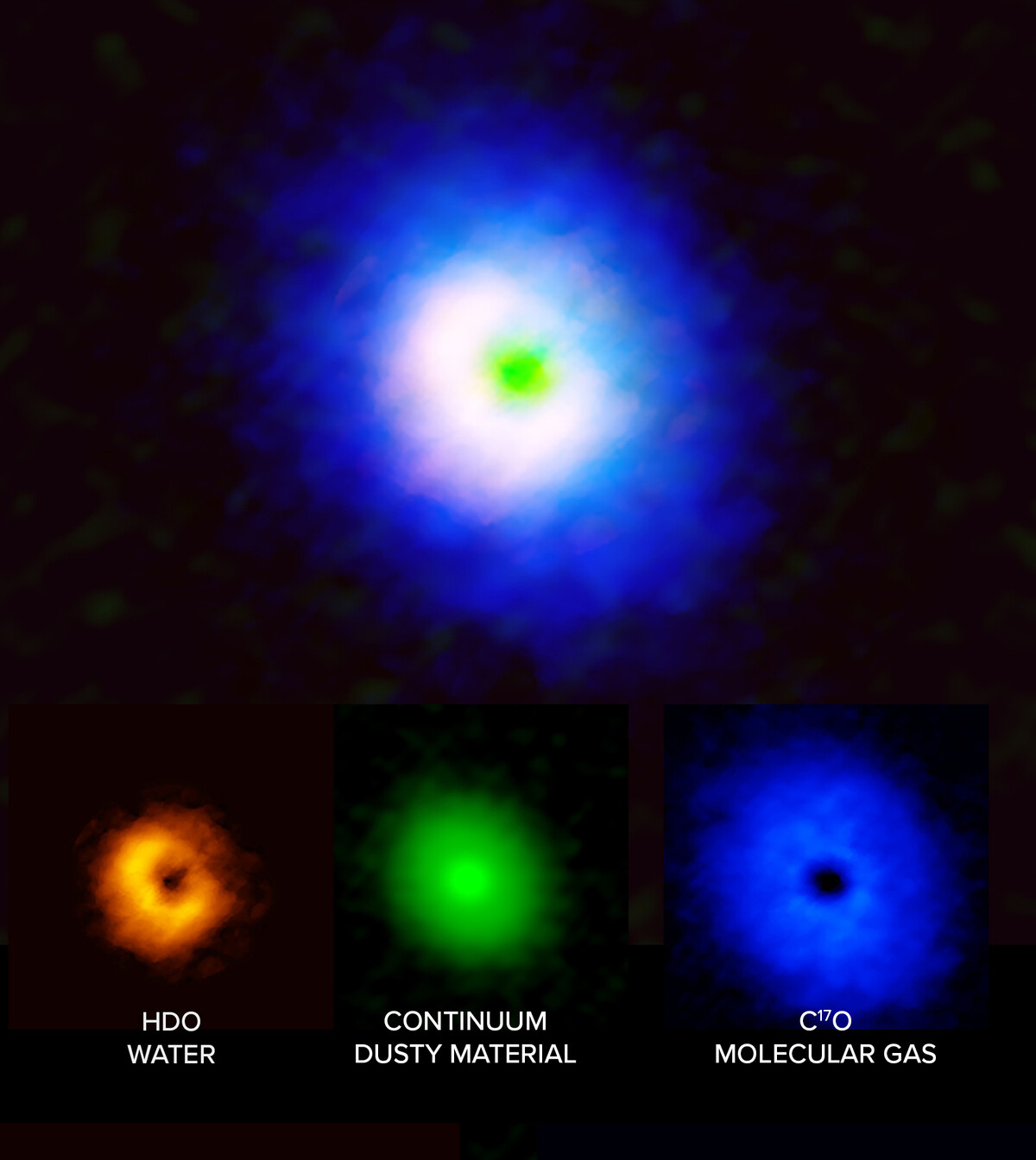With the help of the ALMA radio telescope complex, astronomers discovered gaseous water in the protoplanetary disk. It has a chemical signature that supports the idea that water on Earth is even older than our Sun.

Water in the protoplanetary disk around the star V883 in the artist’s image. Source: ESO/L. Calçada
The discovery was made during the study of the composition of water in the protoplanetary disk surrounding the star V883 Orion. It is located at a distance of 1300 light-years from Earth.
Water usually consists of one oxygen atom and two hydrogen atoms. The researchers focused on studying a little heavier version of water, in which one of the hydrogen atoms is replaced by deuterium — a heavy isotope of hydrogen, which has a nucleus consisting of one neutron and a proton. Since simple and heavy water are formed under different conditions, their ratio can be traced to when and where water is formed. So, it was shown that this ratio in some comets of the Solar System was similar to the ratio in water on Earth, which suggested that it was comets that could deliver it to our planet.

The journey of water from clouds to young stars and then from comets to planets has been observed before. But until now there was no connection between young stars and comets. According to the researchers, the composition of water in the disk around V883 is very similar to the composition of comets in our Solar System. This confirmed the idea that water in planetary systems formed in interstellar space billions of years ago, even before the appearance of the Sun, and then inherited both comets and the Earth in a relatively unchanged form.
It is worth noting that the analysis of water in protoplanetary disks is a very difficult task, since most of it is usually in the form of ice that does not emit any radiation. Of course, the water in the inner part of the protoplanetary disk exists in a gaseous state. However, as a rule, this area is too small to be studied with telescopes.
Fortunately for astronomers, the disk around V883 is unusually hot. A sharp release of energy from the star heated it to a temperature at which most of the water existed in a gaseous state, which made it possible to study its radiation. In turn, this made it possible to make a map of its distribution. The researchers find that the V883 disk contains at least 1200 times more water than all the earth’s oceans.

Protoplanetary disk around the star V883 (ALMA radio telescope images). Source: ALMA (ESO/NAOJ/NRAO), J. Tobin, B. Saxton (NRAO/AUI/NSF)
In the future, scientists hope to use ESO’s Extremely Large Telescope (ELT) and its METIS camera to study V883. This mid-infrared instrument will be able to distinguish the gas phase of water in protoplanetary disks, which will give a more complete picture of how it gets to newborn planets.
According to https://www.eso.org
Follow us on Twitter to get the most interesting space news in timehttps://twitter.com/ust_magazine
Source: universemagazine.com








